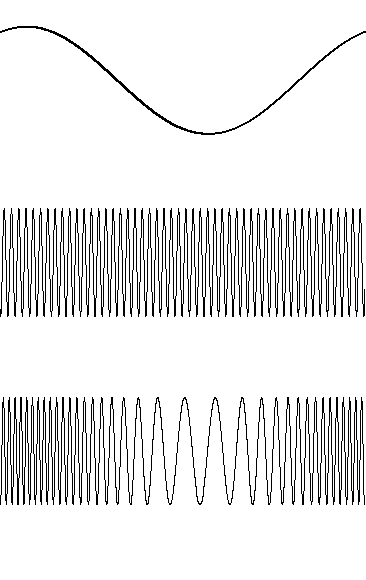
The output of an AM modulator. Here the amplitude (i.e. power) of the carrier is varied in time with the input signal. The frequency of the carrier remains constant, only it's amplitude is varied.
The basic radio signal produced by our transmitter with no audio input is called the carrier. While we may convey information by just switching the carrier on and off (as in the morse code), it is more often desirable to communicate voice, pictures or computer data. In order to do this we feed a signal into the modulator and encode it onto the carrier. This process is called modulation. There are different ways in which we can encode this information onto the carrier. The simplest are Amplitude Modulation (AM) and Frequency Modulation (FM).
 |
A section of the input signal |
| The RF carrier, much higher in frequency than the input signal. | |
|
The output of an AM modulator. Here the amplitude (i.e. power) of the carrier is varied in time with the input signal. The frequency of the carrier remains constant, only it's amplitude is varied. |
 |
A section of the input signal |
| The RF carrier, much higher in frequency than the input signal. | |
|
Here the amplitude of the carrier remains constant. The frequency is varied slightly in time with the input signal. The variation in frequency (called deviation) is usually very small relative to the carrier frequency, but it is shown as large in this case for illustrative purposes. |